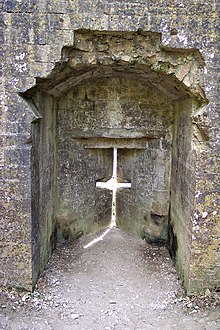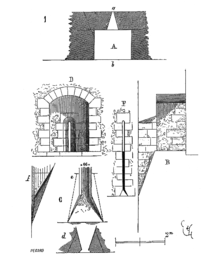Warfare for Writers - Fortifications -- another in the series by Iimons Easisa' lectures with his permission.
There are nine things that tend to be missing when you visit fortifications:
- The surface
- The Glacis -- . . . the glacis prevents attacking cannons from having a clear shot at the walls of a fortress, as one usually cannot even see the walls until the glacis is crossed and the ditch, bounded on either side by the smooth, masoned scarp and counterscarp, is reached. Wikipedia
- Top structures
- Firing steps
- Moats
- Full gate structures
- Barbicans -- A barbican is a fortified outpost or gateway, such as an outer defense to a city or castle, or any tower situated over a gate or bridge which was used for defensive purposes. Usually barbicans were situated outside the main line of defences and connected to the city walls with a walled road called the neck. In the 15th century, with the improvement in siege tactics and artillery, barbicans lost their significance. However, several barbicans were built even in the 16th century.Fortified or mock-fortified gatehouses remained a feature of ambitious French and English residences into the 17th century.
Fortifications in East Asia also featured similar structures. In particular, gates in Chinese city walls were often defended by an additional "archery tower" in front of the main gatehouse, with the two towers connected by walls extending out from the main fortification. Called literally "jar walls", they are often referred to as "barbicans" in English.

- Original approach roads
- Firing slit stoppers --
From Wikipedia, the free encyclopedia

An arrowslit at Corfe Castle. This shows the inside - where the archer would have stood.

An arrowslit at Cité de Carcassonne. The wall thickness is reduced to 0.7 m to accommodate the niche and the embrasure widens at an angle of 35º.
An arrowslit (often also referred to as an arrow loop, loophole or loop hole, and sometimes a balistraria) is a thin vertical aperture in a fortificationthrough which an archer can launch arrows.
The interior walls behind an arrow loop are often cut away at an oblique angle so that the archer has a wide field of view and field of fire. Arrow slits come in a remarkable variety. A common and recognizable form is the cross. The thin vertical aperture permits the archer large degrees of freedom to vary the elevation and direction of his bowshot but makes it difficult for attackers to harm the archer since there is only a small target to aim at.
Balistraria can often be found in the curtain walls of medieval battlements beneath the crenellations.
...more to come!

